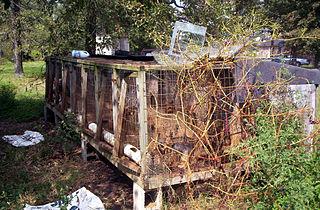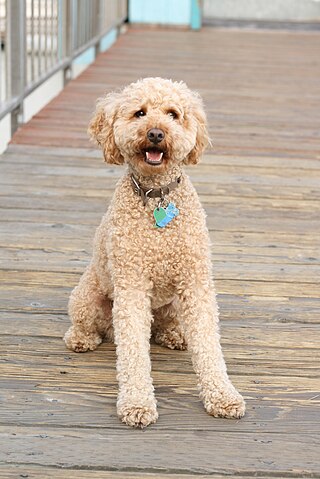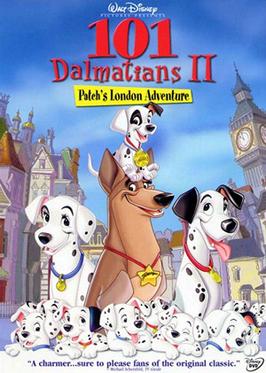
The beagle is a breed of small scent hound, similar in appearance to the much larger foxhound. The beagle was developed primarily for hunting hare, known as beagling. Possessing a great sense of smell and superior tracking instincts, the beagle is the primary breed used as a detection dog for prohibited agricultural imports and foodstuffs in quarantine around the world. The beagle is a popular pet due to its size, good temper, and a lack of inherited health problems.

The Sloughi, or Arabian Greyhound, is an ancient breed of domesticated dog, specifically a member of the sighthound family. It originates from North Africa and is found in Algeria, Tunisia, Morocco and Libya.

The whippet is a British breed of medium-sized dog, of the sighthound type, related to the larger greyhound and the smaller Italian greyhound. Apart from the differences in height, the whippet closely resembles these two breeds; it has sometimes been described as "the poor man's greyhound". It is kept as a companion dog, for competitive showing, for amateur racing as well as lure coursing. It has the highest running-speed of any breed in its weight and size range, and may have the fastest idle-to-running acceleration of any dog.

Santa's Little Helper is a fictional dog in the American animated television series The Simpsons. He is the pet greyhound of the Simpson family. He was previously voiced by Frank Welker, and is currently voiced by Dan Castellaneta. The dog was introduced in the first episode of the show, the 1989 Christmas special "Simpsons Roasting on an Open Fire", in which his owner abandons him for finishing last in a greyhound race. Homer Simpson and his son Bart, who are at the race track in hope of winning some money for Christmas presents, see this and decide to adopt the dog.

101 Dalmatians is a 1996 American adventure comedy film produced by Walt Disney Pictures and Great Oaks Entertainment, with distribution by Buena Vista Pictures Distribution. It is a live action remake of Walt Disney’s 1961 animated feature film of the same name, itself an adaptation of Dodie Smith's 1956 novel The Hundred and One Dalmatians. Directed by Stephen Herek, written by John Hughes and produced by Hughes and Ricardo Mestres, it stars Glenn Close, Jeff Daniels, Joely Richardson, and Joan Plowright. Unlike the 1961 animated film, none of the animals speak.

The Hundred and One Dalmatians is a 1956 children's novel by Dodie Smith about the kidnapping of a family of Dalmatian puppies. It was originally serialized in Woman's Day as The Great Dog Robbery, and details the adventures of two dalmatians named Pongo and Missis as they rescue their puppies from a fur farm. A 1967 sequel, The Starlight Barking, continues from the end of the novel.

The Boxer is a medium to large, short-haired dog breed of mastiff-type, developed in Germany. The coat is smooth and tight-fitting; colors are fawn, brindled, or white, with or without white markings. Boxers are brachycephalic, have a square muzzle, mandibular prognathism, very strong jaws, and a powerful bite ideal for hanging on to large prey. The Boxer was bred from the Old English Bulldog and the now extinct Bullenbeisser, which became extinct by crossbreeding rather than by a decadence of the breed. The Boxer is a member of both The Kennel Club and American Kennel Club (AKC) Working Group.

A puppy mill, also known as a puppy farm, is a commercial dog breeding facility characterized by quick breeding and poor conditions. Although no standardized legal definition for "puppy mill" exists, a definition was established in Avenson v. Zegart in 1984 as "a dog breeding operation in which the health of the mill’s dogs is disregarded to maintain a low overhead and maximize profits". They are cited as being a result of increased demand for household pets, especially after World War II. The Veterinary Medical Association of the Humane Society of the United States defines the main characteristics of a puppy mill as "emphasis on quantity over quality, indiscriminate breeding, continuous confinement, lack of human contact and environmental enrichment, poor husbandry, and minimal to no veterinary care."

The Bernese Mountain Dog is a large dog breed from Bern, Switzerland and the Swiss Alps, being one of the four breeds of Sennenhund-type dogs, with roots in the Roman mastiffs. The name Berner refers to the breed's area of origin in the canton of Bern, and Sennenhund is derived from the German Senne and Hund ("hound/dog"), as they accompanied the alpine herders and dairymen called Senn. This breed was originally kept as a general farm dog and large Sennenhunde in the past were also used as draft animals pulling carts. The breed was officially established in 1912.

The Pembroke Welsh Corgi is a cattle herding dog breed that originated in Pembrokeshire, Wales. It is one of two breeds known as a Welsh Corgi, the other being the Cardigan Welsh Corgi. Pembroke Welsh Corgis descended from the Spitz family of dogs.

Dog crossbreeds, sometimes called designer dogs, are dogs which have been intentionally bred from two or more recognized dog breeds. They are not dogs with no purebred ancestors, but are not otherwise recognised as breeds in their own right, and do not necessarily breed true.

101 Dalmatians II: Patch's London Adventure is a 2003 American animated direct-to-video adventure comedy film produced by Walt Disney Television Animation and Walt Disney Pictures, with distribution by Walt Disney Home Entertainment. It serves as the sequel to Disney's 1961 animated feature film One Hundred and One Dalmatians. It was directed by Jim Kammerud and Brian Smith, with them also writing the screenplay from a story by Kammerud, Dan Root, Garrett K. Schiff, Smith and Temple Mathews and produced by Carolyn Bates and Leslie Hough. It was released on VHS and DVD on January 21, 2003, and features the voices of Bobby Lockwood, Barry Bostwick, Martin Short, Jason Alexander, Susanne Blakeslee, Kath Soucie, Jeff Bennett, and Jim Cummings. Critical reception was positive, with the film garnering DVDX awards for best animated feature, best director, best editing, and best musical score. Disney re-released the film on September 16, 2008.
In some countries there is an overpopulation of pets such as cats, dogs, and exotic animals. In the United States, six to eight million animals are brought to shelters each year, of which an estimated three to four million are subsequently euthanized, including 2.7 million considered healthy and adoptable. Euthanasia numbers have declined since the 1970s, when U.S. shelters euthanized an estimated 12 to 20 million animals. Most humane societies, animal shelters and rescue groups urge animal caregivers to have their animals spayed or neutered to prevent the births of unwanted and accidental litters that could contribute to this dynamic.

The Leonberger is a giant dog breed, whose name derives from the city of Leonberg in Baden-Württemberg, Germany.

Dog types are broad categories of domestic dogs based on form, function, or style of work, lineage, or appearance. Some may be locally adapted dog types that may have the visual characteristics of a modern purebred dog. In contrast, modern dog breeds strictly adhere to long-established breed standards, that began with documented foundation breeding stock sharing a common set of inheritable characteristics, developed by long-established, reputable kennel clubs that recognize the dog as a purebred.

The Dalmatian is a breed of dog with a white coat marked with dark-coloured spots. Originally bred as a hunting dog, it was also used as a carriage dog in its early days. The origins of this breed can be traced back to present-day Croatia and its historical region of Dalmatia. It is thought that early ancestors of the breed were certain breeds of pointers and a spotted Great Dane. Today, it is a popular pet and many enthusiasts enter Dalmatians into kennel club competitions.
Pedigree Dogs Exposed: Three Years On is a 2012 follow-up to the 2008 BBC One documentary, Pedigree Dogs Exposed (PDE). While this second programme looks at the positive changes made since the original film, it focuses on investigating areas of continuing concern. The programme concluded that it was time to call a halt to suffering created by breeders. It states that as long as the Kennel Club (KC) tolerated human whim leading to dogs that cannot run, breathe, or see freely, dogs would continue to suffer, but featured that, in fact, the Kennel Club would continue in the vein, suggesting that the organisation has a conflict of interest in juggling its commitments to breeders and to dogs – when the interest of dogs does not match up with that of breeders, the dogs suffer. It also called on dog fanciers to stop being consumers of 'freak-show" appearance, the driving factor in developing dogs to physical extremes. KC refused to participate in the production. The programme aired on 27 February 2012 in the United Kingdom.
Dogs in the United States have significant popularity and status – they are often treated as family members. Currently, the American Kennel Club is the largest registry of pure breed dogs across the world.
Patti Strand is the founder of the National Animal Interest Alliance (NAIA), a broad-based, mainstream, nonprofit animal welfare organization dedicated to encouraging high standards of animal care and treatment, and to preserving the human animal bond. She is an author of books and articles and has served on numerous local, state and federal animal welfare advisory boards, committees and task force bodies.














